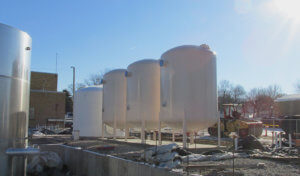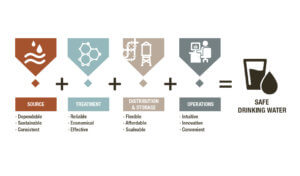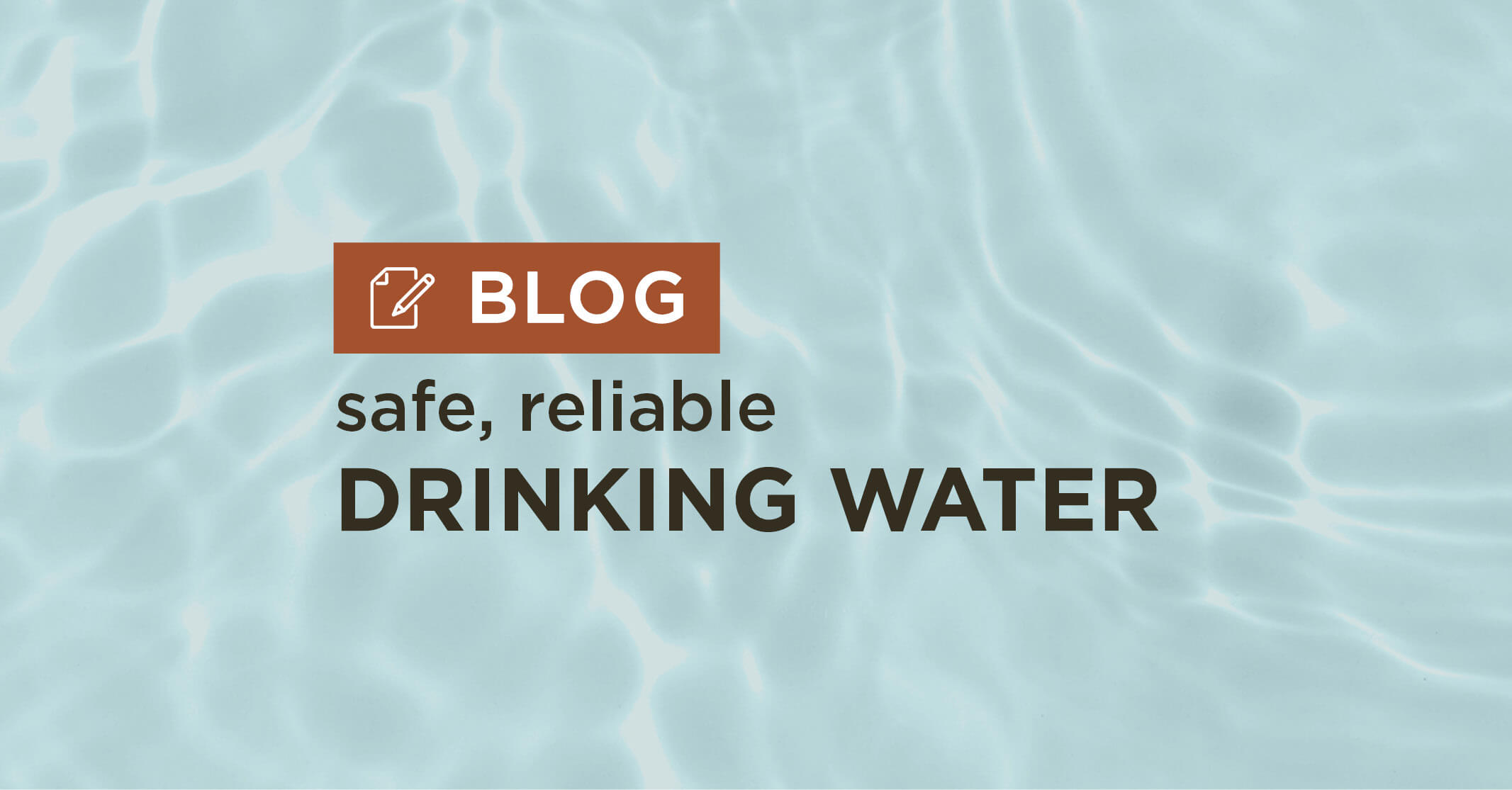Ensuring the Continuity of Drinking Water Supply
Municipal water utilities are among the most regulated industries in the country, with countless tests conducted on the drinking water supply every day. With such stringent regulations in place, it’s easy to see why many water providers rely on the expertise of outside professionals to help them maintain and improve the water quality standards in their jurisdiction.
The Snyder & Associates team of water experts is one of the leading groups in this field. They regularly aid municipalities to meet or exceed the safe drinking water standards set by the U.S. Environmental Protection Agency (EPA) and the numerous state Departments of Natural Resources (DNR). Our team has a proven track record of consistently producing high-quality water systems at every stage of the operation — from selecting viable source water and determining the proper treatment regimen to implementing right-sized storage solutions and designing efficient distribution systems.
Source Water Determinants
Most Midwestern municipalities can access several sources to quench their drinking water needs. These are generally rivers, lakes, or groundwater aquifers. However, determining the best source to serve a particular community involves three principal factors: reliability, quality, and quantity.
To streamline the process, our water experts run a series of tests and hydraulic/hydrologic mapping scenarios to determine which option could be the most dependable source. Following the assessment, a report providing comprehensive details on water system components is compiled.
“Source waters have subtle differences, which can significantly affect process selection and performance,” states Darin Jacobs, Water Resources Group Leader at Snyder & Associates. “That’s why comprehensive water evaluations are so important.”
Unfortunately, these subtle properties and contaminant differences create one of the main source water challenges. According to the EPA, the leading cause of water quality degradation nationwide is nonpoint source pollution (NPS). Over 60 percent of these contaminants are accumulated through runoff from lawns, agriculture, highways, and landfills, to name a few. These contaminants can transmit serious waterborne pathogens in the form of disease-causing bacteria and viruses. Therefore, every water supply requires treatment and disinfection to confirm that water has been rendered safe and remains safe in every community.
Selecting Water Treatment Solutions

Snyder & Associates conducted a comprehensive water system study of the Toledo Water Treatment Plant. In addition to installing two Aeralater® units, we incorporated a new ion exchange softening system to ensure proper radium regulation.
Municipal leaders and plant operators often prioritize efficient, cost-effective, and user-friendly systems when evaluating treatment methods. Every community’s water source and necessary treatment options present unique challenges, and selecting a new system requires thoughtful examination.
Site conditions, accessibility, hydraulics, treatment efficiencies, costs, operational requirements, and many other challenges come into play during treatment selection decision-making. Whether installing a completely new system or simply upgrading a current treatment process to meet new guidelines, identifying issues early in the planning process can help ease the transition.
At Snyder & Associates, our experts are well-versed in the current product offerings and processes and create an analysis comparing and identifying potential treatment alternatives. After thoroughly vetting their findings, our team will help you select the best, right-sized option to feel confident you’ve made the right decision for your community.
Drinking-Water Storage, Distribution, & Ongoing Operations
In the typical municipal water system, water flows from a treatment plant to a storage tank and eventually to homes and businesses through complex distribution systems. If stacked end-to-end, these systems would span nearly one million miles across the U.S. Distribution systems account for most of the water infrastructure and pose challenges from both an operational and public health standpoint.

Each step in the water treatment process presents unique challenges. But, through the right, individualized processes, safe and reliable drinking water is possible.
Adding to the complexity of the distribution network and the need for adequate reserve capacity, most drinking water distribution systems incorporate some form of water storage component. The challenge with including storage in a water system is the additional hold and transport times between the treatment plant and the consumer. These added steps increase the opportunity for contamination throughout the distribution system. Municipalities can reduce the contamination risk through routine, proactive maintenance and proper disinfection.
However, even with proper treatment systems and storage, another hidden danger can impact water quality. This deterioration is related to the accumulation of pipe corrosion, biofilms, and loose deposits within a network. Water quality can only be as good as the pipes it flows through, so maintaining these systems must be prioritized just as much as the storage infrastructure. Because distribution systems expand as cities grow, they’re usually made up of various pipes and materials with vastly different ages. Since pipe access is extremely limited, the water industry depends on multiple tests to assess their condition.
The Snyder & Associates water experts help keep systems running smoothly by conducting critical water assessments and analyzing overall water chemistry. Among other variables, these detailed assessments help determine if water is corrosive or highly depositional. Corrosive water indicates elements have been pulled from pipe walls, leading to higher dissolved impurities and potential leaks. Depositional water, on the other hand, forms hard water build-up inside pipes, leading to decreases in water flow and higher levels of calcium, iron, or magnesium.
Professional Analysis Critical for Quality Water Supply
Water goes through many stages from the source to the tap to become safe to drink. Although the U.S. drinking water supply remains among the safest in the world, it faces a growing collection of increasingly costly challenges. Tackling these problems requires realistic priorities, comprehensive planning, and collaboration among municipalities, utilities, and the private sector.
Our multidisciplinary engineering and water systems professionals have the expertise to establish a safe water treatment system efficiently. We’ll thoughtfully balance quality and cost expectations while ensuring that the final product meets the highest professional compliance standards.
